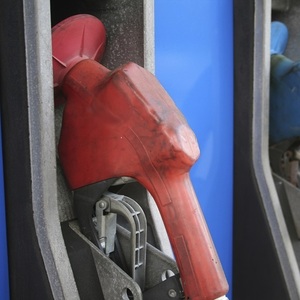The Andersons' Pirolli offers perspective on retail ethanol

April 25, 2019
BY Matt Thompson
Jim Pirolli, president of The Andersons’ Ethanol Group, knows about the retail station side of ethanol. Prior to working at The Andersons, Pirolli worked at Kum and Go and helped the company build its ethanol portfolio.
“While I was at Kum and Go, I continued to get more exposure to The Andersons because I was buying products like ethanol and E85 from their Denison location to supply Kum and Go assets Iowa and Nebraska,” he said. That relationship eventually led to an opportunity to join The Andersons.
Advertisement
Advertisement
Prior to his involvement, Kum and Go was working to develop its ethanol offerings, Pirolli said. Their overall strategy was to “really push the biofuels story overall, because there’s performance benefits, there’s value for the consumers there, and it’s a great story in the communities and the area that Kum and Go operated in,” he said.
Kum and Go was one of the first retail chains to offer E85 ethanol, according to Priroli. “Kum and Go was a leading retailer in E85 and one of the early adopters of E15 as well. They continued to push that and build it out and really figure out how to make those economics as beneficial as possible,” he said. “There were a lot of major retailers sitting on the sidelines, so it was unique, but it was aligned with that company’s strategy and … many have followed suit since then.
Advertisement
Advertisement
With potential year-round sales of E15 on the horizon, Pirolli said some of the retailers who have opted to remain on the sidelines may decide to add start offering higher ethanol blends. “For some of those that were being conservative and waiting to see how this played out, waiting for the one-pound waiver has been a major sticking point to them,” he said. “And I understand that, because you have to relabel and change blends and change things at a large number of retail stores to make sure you’re perfectly in compliance every day of the year. … Hopefully with that roadblock out of the way, there is another wave of retailers, large and small, that say, ‘Hey, we can do this. We can adopt it and do it compliantly, legally, and provide more value and choice at the pump and win over some more customers.’”
And for those who are interested in selling E15, Pirolli said he recommends “[contacting] one of the major industry organizations and [getting] some advice, and if they have any questions to start there.” Getting answers and advice how to add higher blends of ethanol that is compatible with existing equipment is key, he said. “Understanding the equipment and infrastructure that they have at the stores, and what the options are to move up from E10 to E15; that’s really where the rubber meets the road,” Pirolli said. “That’s what you have to understand. … So many people have been doing it now that there’s good advice and answers for just about any configuration that a store might have.”
Related Stories
The U.S. Energy Information Administration maintained its forecast for 2025 and 2026 biodiesel, renewable diesel and sustainable aviation fuel (SAF) production in its latest Short-Term Energy Outlook, released July 8.
XCF Global Inc. on July 10 shared its strategic plan to invest close to $1 billion in developing a network of SAF production facilities, expanding its U.S. footprint, and advancing its international growth strategy.
U.S. fuel ethanol capacity fell slightly in April, while biodiesel and renewable diesel capacity held steady, according to data released by the U.S. EIA on June 30. Feedstock consumption was down when compared to the previous month.
XCF Global Inc. on July 8 provided a production update on its flagship New Rise Reno facility, underscoring that the plant has successfully produced SAF, renewable diesel, and renewable naphtha during its initial ramp-up.
The USDA’s Risk Management Agency is implementing multiple changes to the Camelina pilot insurance program for the 2026 and succeeding crop years. The changes will expand coverage options and provide greater flexibility for producers.
Upcoming Events










